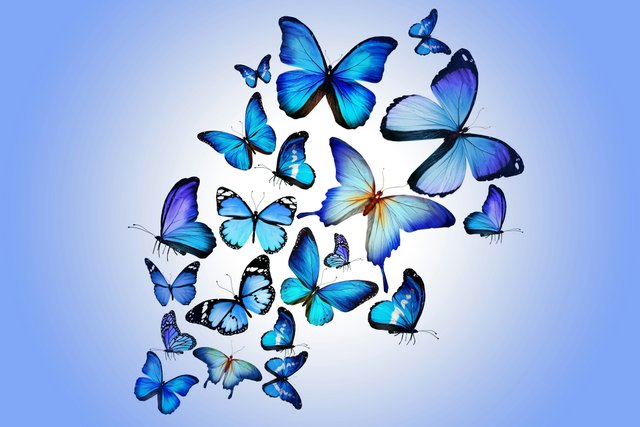BASIC FACTS ABOUT BUTTERFLIES
Butterflies (Order: Lepidoptera) are brightly colored flying insects with two pairs of large wings that vary in color and pattern from species to species. Butterfly wings are covered with overlapping rows of tiny scales, a characteristic butterflies share with their fellow lepidopterans, the moths.
DIET
A caterpillar’s first meal is its own eggshell. It then spends most of its time eating the leaves of the plant on which it hatched. An adult butterfly uncoils its long, straw-like proboscis to sip nectar from flowers, juice from rotting fruit and water from puddles.
POPULATION
Exact numbers are not known since there are about 17,500 species of butterflies spread throughout almost the entire world.
RANGE
Butterflies are found worldwide except on the continent of Antarctica. Many species migrate to avoid adverse conditions. Most migrate relatively short distances, but monarchs and several other species migrate thousands of miles.
BEHAVIOR
Life cycle: From egg to adult, butterflies undergo a series of physical transformations known as metamorphosis. After mating, the female butterfly lays her eggs on a caterpillar food or “host” plant. The eggs can hatch within a few days, or within months or even years, depending on whether or not conditions are right.
After hatching, a caterpillar begins to eat the host plant. The caterpillar sheds its skin several times during this stage. It then seeks a sheltered spot, suspends itself by silken threads and sheds one last time to reveal skin that will harden to form the chrysalis or pupa. Days, months or even years later, depending on the species, a fully developed winged adult emerges from the chrysalis and the cycle begins anew.
Defense Mechanisms: Many butterflies have developed interesting ways of defending themselves from predators. One method is disguise, or “cryptic coloration”, where the butterfly has the ability to look like a leaf or blend into the bark of a tree to hide from predators. Another method is chemical defense, where the butterfly has evolved to have toxic chemicals in its body. These species of butterfly are often brightly colored, and predators have learned over time to associate their bright color with the bad taste of the chemicals.
THREATS
The greatest threats to butterflies are habitat change and loss due to residential, commercial and agricultural development. Climate change is also threatening species of butterfly. The Edith’s checkerspot butterfly, which ranges from Baja to Canada along the West Coast, has been moving northward and upslope. But for two subspecies – the Bay and Quino— their progress is blocked by the vast urban landcapes of San Francisco and San Diego, respectively. Both subspecies are now critically imperiled.
Hi! I am a robot. I just upvoted you! I found similar content that readers might be interested in:
https://defenders.org/butterflies/basic-facts
Congratulations @noyon0071! You have completed some achievement on Steemit and have been rewarded with new badge(s) :
Click on any badge to view your own Board of Honor on SteemitBoard.
For more information about SteemitBoard, click here
If you no longer want to receive notifications, reply to this comment with the word
STOP